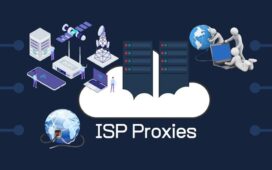Choosing the Right SaaS Vendors for Your Business
When it comes to SaaS vendor management effectively and efficiently, choosing the right vendors for your business is the first and most important step. By selecting the right vendors, you can ensure that your organization receives the best services and support for your specific needs. Here are three key factors to consider when choosing SaaS vendors:
1. Understanding Your Business Needs
Before you start evaluating potential SaaS vendors, it is crucial to have a clear understanding of your business needs. Take the time to assess your requirements, objectives, and challenges. Determine the specific features and functionalities that are essential for your business, as well as any industry-specific requirements.
By defining your business needs, you can narrow down the list of potential vendors to those who can meet your requirements. This will save you time and effort in the evaluation process and increase the likelihood of finding a vendor that aligns with your business goals.
2. Evaluating Vendor Reputation and Reliability
Vendor reputation and reliability are critical factors to consider when selecting SaaS vendors. It is essential to research and evaluate the vendor’s reputation in the market. Look for reviews, testimonials, and case studies from other customers to get an idea of their track record.
You should also assess the vendor’s reliability in terms of uptime, system performance, and customer support. Consider factors such as their history of service disruptions, response time for support inquiries, and their commitment to resolving issues promptly.
By choosing a vendor with a solid reputation and proven reliability, you can minimize the risk of service disruptions and ensure that your organization receives the level of support it requires.
3. Analyzing Vendor Pricing and Contract Terms
Pricing and contract terms are essential considerations when choosing SaaS vendors. Evaluate the vendor’s pricing structure to ensure it aligns with your budget and cost expectations. Consider factors such as monthly or annual subscription fees, pricing tiers based on usage or features, and any additional costs for integrations or customization.
Furthermore, carefully review the vendor’s contract terms and conditions. Pay attention to aspects such as contract duration, termination clauses, data ownership and privacy, and any limitations or restrictions that may impact your organization’s operations.
By conducting a thorough analysis of the vendor’s pricing and contract terms, you can make an informed decision that aligns with your financial goals and minimizes any potential risks or conflicts in the future.
Establishing a Strong Vendor Relationship
Once you have chosen the right SaaS vendors for your business, establishing a strong vendor relationship is crucial for effective and efficient management. Building a strong partnership with your vendors can significantly contribute to the success of your organization. Consider the following steps to establish a strong vendor relationship:
1. Building Effective Communication Channels
Effective communication is at the core of any successful vendor relationship. Establish clear lines of communication with your vendors to ensure smooth and timely exchange of information. Determine the preferred communication methods, whether it’s email, phone calls, or collaboration tools.
Regularly communicate with your vendors to discuss updates, concerns, and opportunities for improvement. Keep the lines of communication open to address any issues promptly and proactively. By fostering effective communication channels, you can build trust and transparency with your vendors, leading to a stronger partnership.
2. Setting Clear Expectations and Service Level Agreements
Setting clear expectations and service level agreements (SLAs) is crucial for managing SaaS vendors effectively. Clearly define the scope of services, performance expectations, response and resolution times, and any service credits or penalties for not meeting the agreed-upon SLAs.
Regularly review and update the SLAs to ensure they reflect your evolving business needs and technological advancements. This will enable both parties to have a shared understanding of the expected service levels and ensure accountability on the vendor’s part.
3. Regular Vendor Performance Review and Feedback
Regular performance reviews and feedback sessions are essential for continuously improving and optimizing the vendor relationship. Schedule periodic meetings with your vendors to discuss their performance, identify areas for improvement, and provide constructive feedback.
During these sessions, discuss metrics such as uptime, response times, customer satisfaction, and any issues or challenges encountered. Celebrate successes and acknowledge areas where improvements are needed. By maintaining an ongoing dialogue, you can ensure that your vendors are aligned with your business goals and constantly working to enhance their services.
Maximizing Efficiency in Vendor Management
To further enhance the management of SaaS vendors, there are several strategies and tools you can utilize to maximize efficiency. Consider the following approaches:
1. Implementing a Streamlined Vendor Onboarding Process
A streamlined vendor onboarding process is crucial for efficient vendor management. Develop a standardized onboarding process that includes clear documentation, training materials, and requirements for the vendor to meet.
Establish clear guidelines and expectations from the beginning to ensure a smooth transition and efficient integration of the vendor’s services into your organization. By standardizing the onboarding process, you can save time and reduce the potential for miscommunication or delays.
2. Utilizing Vendor Management Software and Tools
Vendor management software and tools can significantly enhance the efficiency of managing SaaS vendors. These tools can help you track and manage vendor contracts, performance metrics, and communication logs.
Consider implementing a vendor management software that allows you to centralize all vendor-related information, automate contract renewals and terminations, and generate performance reports. By leveraging technology, you can streamline vendor management processes and reduce administrative overhead.
3. Ensuring Compliance and Security Measures
Compliance and security should be top priorities when managing SaaS vendors. Ensure that your vendors comply with industry regulations and standards, especially if your organization operates in a highly regulated sector.
Regularly assess and monitor the vendor’s security measures and data protection practices to ensure the safety and integrity of your organization’s sensitive data. Establish clear protocols for incident response, data breach notifications, and contingency plans to mitigate any potential risks.
Mitigating Risks and Troubleshooting Vendor Issues
Despite careful selection and effective vendor management, issues with SaaS vendors may arise. It is essential to have strategies in place to mitigate risks and troubleshoot any problems that may occur. Consider the following approaches:
1. Developing a Robust Vendor Risk Management Strategy
Developing a robust vendor risk management strategy is crucial to proactively identify and mitigate potential risks. Conduct regular vendor risk assessments to evaluate their financial stability, security practices, and adherence to regulatory requirements.
Establish contingency plans and alternative vendor options to mitigate the impact of any disruptions or vulnerabilities. By taking a proactive approach to vendor risk management, you can reduce the likelihood and severity of issues.
2. Resolving Vendor Service Disruptions and Downtime
In the event of service disruptions or downtime, it is important to act swiftly to minimize the impact on your organization. Ensure that your SLAs specify the response and resolution times for such incidents.
Establish clear escalation paths and communication channels to promptly notify the vendor of any service disruptions and work together to resolve them. Regularly review the effectiveness of these processes and identify areas for improvement to minimize future disruptions.
3. Handling Vendor Contract Terminations and Transitioning
In some cases, it may be necessary to terminate a vendor contract or transition to a new vendor. It is crucial to handle these situations professionally and efficiently to avoid any negative impacts on your business.
Review the contract termination clauses and ensure that you comply with the agreed-upon notice period and any other contractual obligations. Develop a transition plan to smoothly transfer services to a new vendor, ensuring minimal disruptions to your operations.
Communicate openly with the vendor throughout the termination and transition process, addressing any concerns or issues that may arise. By handling these situations with professionalism and clear communication, you can navigate vendor contract terminations and transitions effectively.
Managing SaaS vendors effectively and efficiently requires careful consideration when choosing the right vendors, establishing a strong vendor relationship, maximizing efficiency, and mitigating risks. By following the strategies outlined in this guide, you can optimize vendor management and ensure that your organization receives the best services and support for its specific needs.
FAQ
Question: What are some key factors to consider when choosing SaaS vendors? – Understanding your business needs, evaluating vendor reputation and reliability, and analyzing vendor pricing and contract terms are key factors to consider when choosing SaaS vendors.
Question: How can I establish a strong vendor relationship? – Building effective communication channels, setting clear expectations and service level agreements, and conducting regular vendor performance reviews and feedback sessions can help establish a strong vendor relationship.
Question: What are some strategies to maximize efficiency in vendor management? – Implementing a streamlined vendor onboarding process, utilizing vendor management software and tools, and ensuring compliance and security measures can help maximize efficiency in vendor management.
Question: What should I do if issues arise with SaaS vendors? – Developing a robust vendor risk management strategy, resolving vendor service disruptions and downtime promptly, and handling vendor contract terminations and transitioning professionally can help mitigate risks and troubleshoot vendor issues effectively.
Useful Resources:
- https://www.saas.com/ – A comprehensive website providing information and resources on SaaS vendors and management.
- https://www.vendorselection.com/ – A website offering guidance and tools for selecting and managing vendors.
- https://www.gartner.com/ – Gartner is a renowned research and advisory company that offers insights and analysis on technology vendors and trends.
- https://www.outsourcingadviser.com/ – A platform that provides resources and advice on managing outsourcing vendors, including SaaS providers.
- https://www.cio.com/ – CIO.com is a reputable website that offers articles, news, and insights on various aspects of technology management, including vendor relationships.
- https://www.techtarget.com/ – TechTarget is a reliable source for IT professionals and provides resources on vendor management and technology trends.
- https://www.ibm.com/ – IBM offers resources and solutions for vendor management, including software tools and best practices.
- https://www.cio.gov/ – The Chief Information Officer (CIO) website provides information and resources for government organizations, including vendor management guidance.







